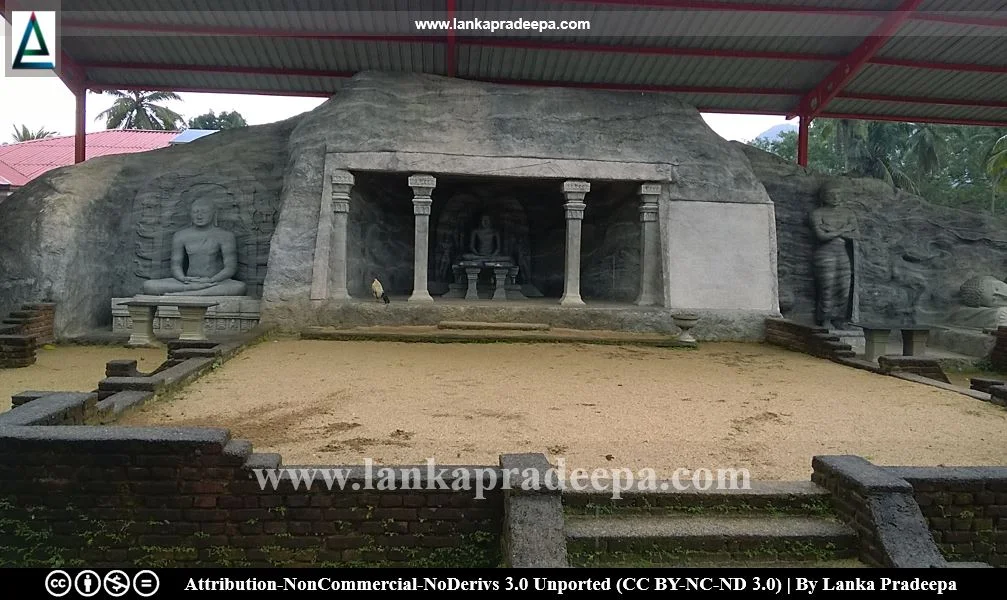
Aramanapola Raja Maha Viharaya, also known as Ganegama Raja Maha Viharaya (Sinhala: අරමණපොල විහාරය), is a Buddhist temple located in Ganegama village in Ratnapura District, Sri Lanka. The site can be reached by travelling along the Ratnapura - Haputhale road about 20 km distance from Ratnapura town.
History
The history of the Aramanapola temple runs back to the reign of Parakramabahu VI of Kotte [(1412-1467 A.D.) Gnanawimala Thera, 1967]. The name of this temple is recorded in the Pepiliyana Slab Inscription of Parakramabahu VI (Rohanadeera, 2007). The two-storied image house of the temple is said to have been erected during the Kandyan Period (Gnanawimala Thera, 1967).
Aramanapola Copper Plate Grant
During the reign of King Sri Vikrama Rajasinghe (1798-1815 A.D.), Anomadassi Thera who was a monk of the lineage of Kottimbulawala Viharaya restored the old Stupa of the temple by constructing a new rampart around it. Expending 1285 amount of silvers he also erected a Stupa and three images at Aramanapola Viharaya and the merit thus acquired was offered to the Mahawasala of Kandy (Gnanawimala Thera, 1967). By hearing this meritorious deed, King Sri Vikrama Rajasinghe issued a copper plate in 1730 of Saka years (1808 A.D.), declaring several grants of properties to both Kottimbulwala Viharaya and Aramanapola Viharaya (Gnanawimala Thera, 1967). This copper plate grant is considered today as an important inscription as it reveals some historical details about the Aramanapola temple.
A Protected Site
Aramanapola Raja Maha Viharaya in the Divisional Secretary’s Division of Pelmadulla is an archaeological protected monument, declared by a government gazette notification published on 2 March 1951.




References
1) Gnanawimala Thera, K., 1967. Saparagamu Darshana (In Sinhala). S. Godage Saha Sahodarayo. pp.180-181,216-220.
2) Rohanadeera, M., 2007. Archaeological Survey of Ceylon: Inscriptions of
Ceylon. (Vol. VIII). Department of Archaeology. ISBN:
978-955-91-59-64-3. pp.43-46.
3) The Gazette notification (Ceylon). No: 10217. 2 March 1951.

